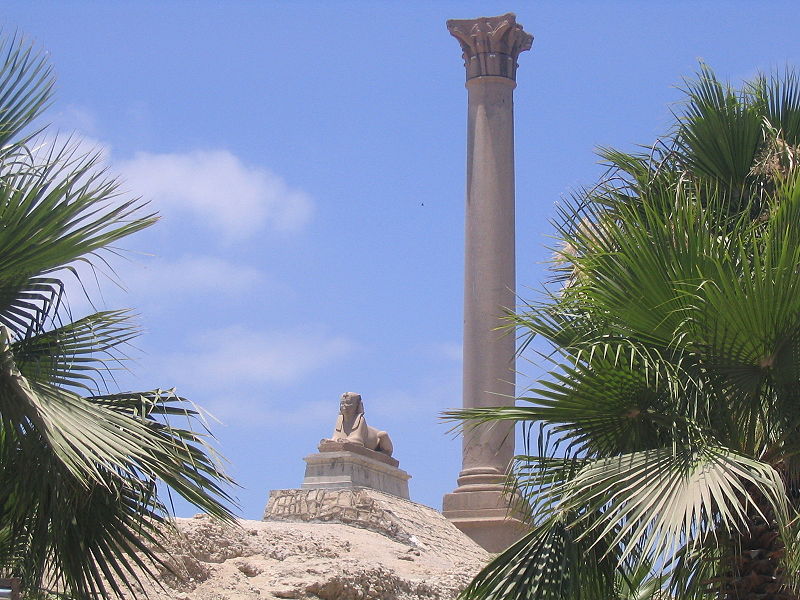A Pillar and an Archer in Medieval Alexandria January 23, 2011
Author: Beach Combing | in : Ancient, Medieval , trackback
Ancient pillars survive even when associated buildings collapse. Many Greco-Roman pillars, indeed, are still standing today: a testimony to the durability of early Mediterranean civilisation.
The medieval dwarfs looking back at the achievements of the classical world often got excited by pillars.
Pillars were probably in part responsible for causing an early English poet to describe the ruins of a Roman settlement (Bath?) as ‘the work of Giants’.
A sub-category of Christian saints, the stylites, used to climb on top of pillars and sit there for years on end in one of the more curious ascetic acts.
Then there were the various Arab responses to the pillars that they found right through the Levant and Northern Africa. The following is a story from a fourteenth-century Arabic source:
Another of the marvels of [Alexandria] is the awe-inspiring marble column outside it, called by them the Pillar of Columns. It is in the midst of a grove of date palms, but it stands out from amongst the trees, over-topping them in height. It is a single block, skilfully hewn, erected on a plinth of square stones like enormous platforms, and no one knows how it was erected there, nor for certain who erected it.*
The reference is to Pompey’s Pillar – note the admiration and mystification that this behemoth of the past creates in our narrator. He then quotes a charming story (from another source).
I have been told by one of my teachers, a much-travelled man, that an individual of the corps of archers at Alexandria climbed to the top of this column, taking his bow and quiver with him, and sat himself down there. When the news of this spread, a huge crowd assembled to gaze at him. Everyone was greatly astonished at his feat and puzzled to know how he had contrived to do it…
This was the way in which he contrived to ascend the column. He shot an arrow, to the end of which he tied a long thread, and to the end of the thread a stout rope, so that the arrow passed over the top of the column and exactly transverse to it, and fell on the side opposite to the archer. Thus the thread lay transversely across the top of the column, and he pulled on it until the middle of the rope came to the top of the column in place of the thread. He then secured the rope firmly in the ground at one end and climbed up from the other end, and having taken up his position on top pulled away the rope. He had someone with him who carried it away, so that people had nothing to guide them to his trick and were astonished by his feat.
What would that great hermit of the Syrian desert, St Simon Stylite have had to say about this after spending forty years atop his pillar in the sands? Fluxomry and buffoonery, Beachcombing suspects… And how did the intrepid archer get down?
Beachcombing would be interested in any other Roman column stories: drbeachcombing AT yahoo DOT com



